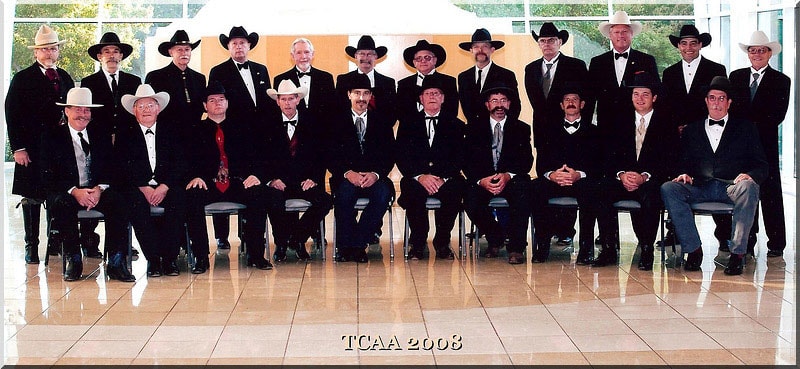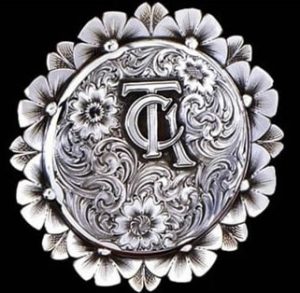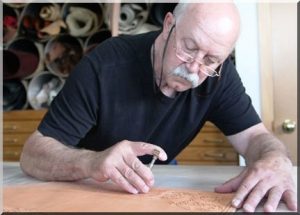

The Traditional Cowboy Arts Association grew out of a meeting of leading Western craftsmen in the Spring of 1998. This elite group of saddlemakers, bit and spur makers, silversmiths and rawhide braiders found common cause in the need to attract the next generation to take up these four disciplines and the equally important task of helping the public understand and appreciate the level of quality available today and the value of fine craftsmanship.
The National Cowboy and Western Heritage Museum, whose mandate is an ideal complement to the goals of the TCAA, agreed to host an annual group exhibition and sale, with the inaugural event coinciding with the opening celebration for the museum’s square foot expansion in September, 1999. The national Cowboy Museum has hosted the exhibition each year since, with the date permanently established as the last weekend in September.
The TCAA and Museum have added an annual seminar which offers three presentations on related Western Heritage subjects as well as two professional level workshops organized as a joint venture of the museum and the TCAA. A mentoring program was also established in the early years, which to date has provided one-on-one instruction to aspiring craftspeople. TCAA programs which include the exhibition and sale, seminars, workshops, scholarships and mentoring are all aimed at achieving the TCAA’s stated goals, through education.
TCAA by Chuck STORMES

Since the nineteen-seventies, the idea of an organisation of western craftsmen has been circulated several times. Nothing lasting came of those attempts, probably due to a lack of a tangible goal to make the effort seem worthwhile.
Early in 1998, a small group of artisans entertained the idea once again. Believing that they could identify a number of like-minded saddlemakers, silversmiths, bitmakers and braiders, they arranged an organisational meeting which included a few non-artists who had the expertise to shepherd the fledgling group through incorporation, name and trademark search and incorporation.
Without the efforts of Don Bellamy, Kent McCorkle, Jim Liley and others, these important early steps may have been insurmountable.
At the defining meeting, in Hayden Lake, Idaho in the Spring of 1998, the founders identified three major challenges which proved to be the common interest that had previously been elusive :
- An aging core of Masters who were not being succeeded by dedicated younger craftsmen
- A lack of apprenticeship and mentorship programs to help ensure the future of those disciplines
- A lack of understanding and appreciation of the finer points of craftsmanship among members of the public and collectors
The 14 founding members who were brought together as a result of that meeting found common cause in that three-pronged challenge. The cost of incorporation, legal fees and searches were covered by members’ dues, which were shared equally among the founders.
As the original concept was further defined, plans emerged for one-on-one mentoring of promising individuals, group workshops and an annual group show to help create awareness of the high level of skill that may be at risk.
By the summer of 1998, a name had been selected – Traditional Cowboy Arts Association- a set of bylaws was taking shape and a meeting was arranged with the National Cowboy Hall of Fame in Oklahoma City, to discuss the possibility of a group show, featuring the finest work that this able group could produce in time for their first exhibition and sale, in the Fall of 1999.
Scheduled to coincide with the grand opening of a major addition to the museum’s exhibition space, the initial TCAA show was supported by the Museum Board and the large crowd that had gathered to celebrate the museum’s expansion.
Groundbreaking sales of elaborate items representing hundreds of hours of skilled hand work immediately caught the attention of the public, collectors and the media.
Within three years, the annual TCAA exhibition and sale became a well attended stand-alone weekend event featuring a professional level workshop, seminar, banquet and sale.
And the rest, as they say, is history.
